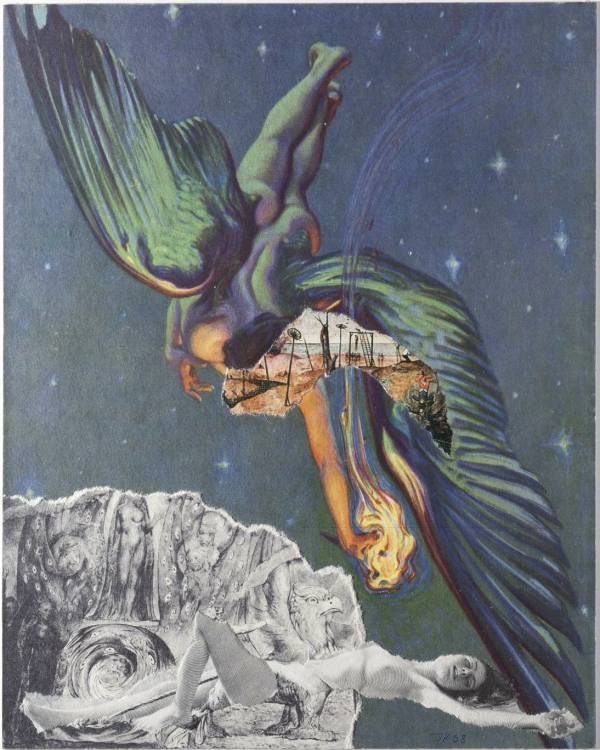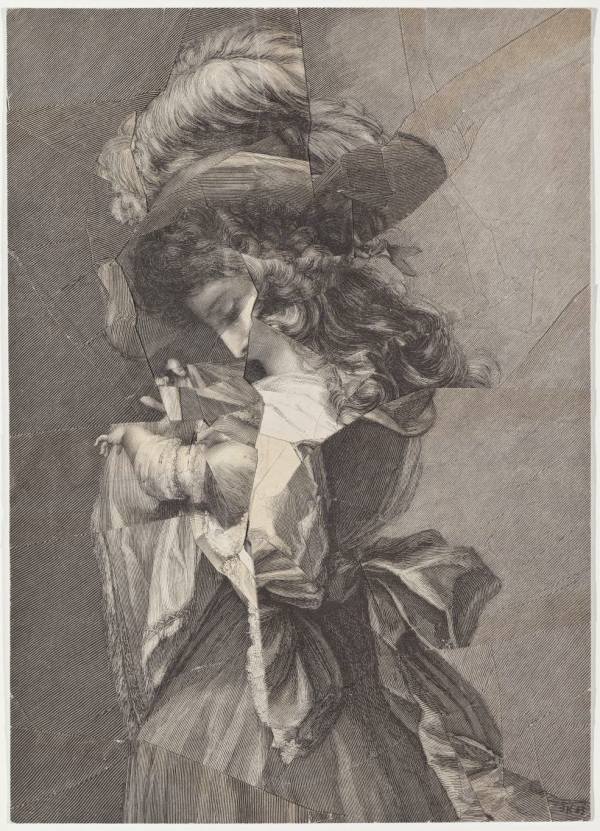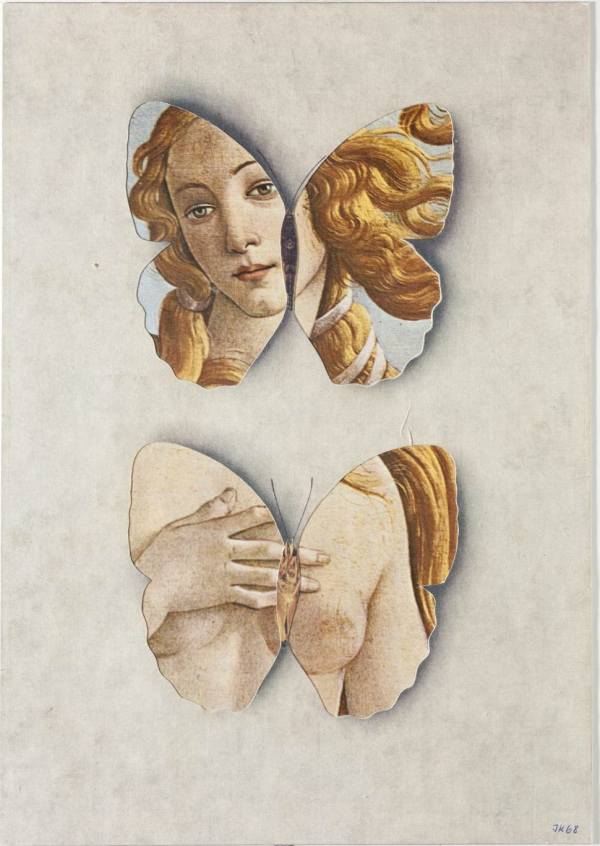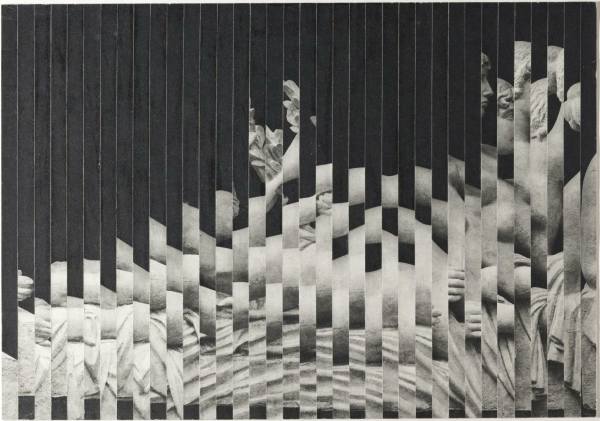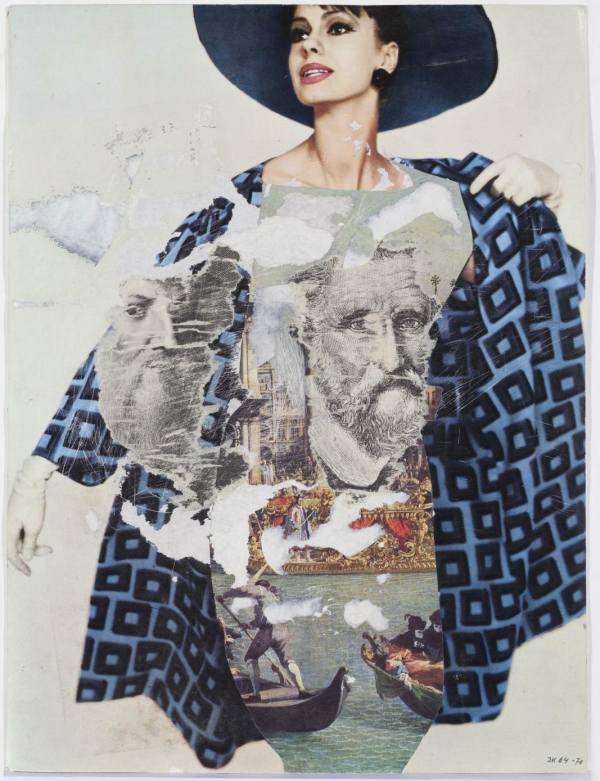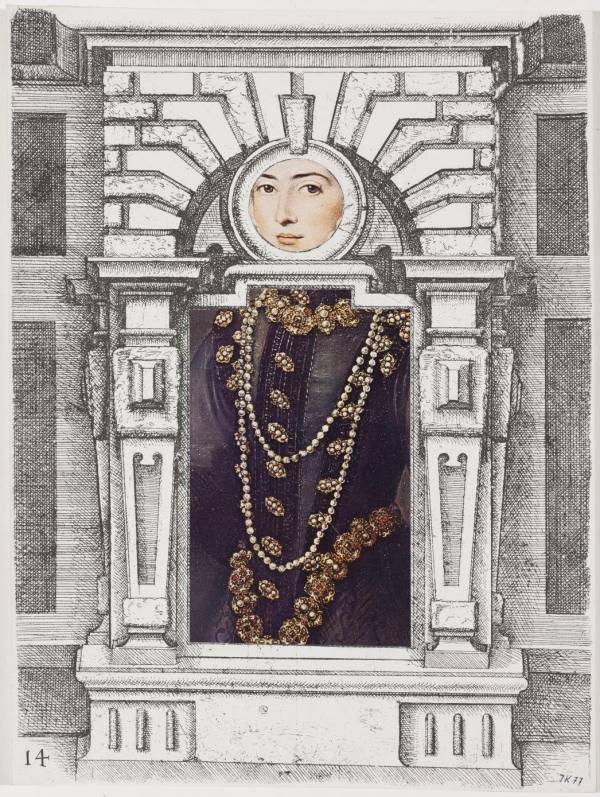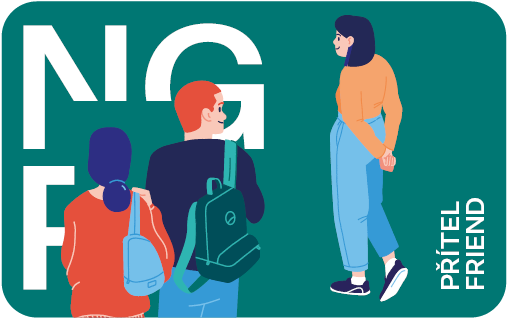Dedicated to Běla Kolářová
To mark the 110th anniversary of the birth of artist and poet Jiří Kolář (1914–2002), the National Gallery Prague has prepared a graphic arts cabinet devoted to his collages from the 1960s and 1970s made from reproductions of famous works of art. A gripping mosaic of art history has been turned by the artist into a story of 20th-century visual art that is at once personal and a universal testimony to the times. Collages from the National Gallery’s collections that have never been exhibited before are on display. They are entitled A History of Nothing and Death of a Bobbin Lacemaker. Both extricate themselves from dependence on the course of history and are assembled from experiments in collage made over two decades and linked together by artistic reproductions of works ranging from the classical masters to the modern, from Leonardo da Vinci and Botticelli to Ingres and Gauguin, Matisse and Picasso.
Unlike Kolář’s critical confrontage works, his diary entries from 1968, and other examples of his art already presented by the National Gallery Prague at the exhibition Grimace of the Century (2018), this graphic arts cabinet showcases a more intimate dimension of the artist, testifying not only to his fascination with visual art in general but also with beauty, reflected in depiction of women, whether in the form of the Holy Virgin or of Venus, women of virtue and femmes fatales. The poet took their figures from various works of art, cut them up, crumpled them, or ripped them to pieces and confronted them with reproductions of those works through the ages, opening them up to entirely new contexts in the search for meaning.
The history of Kolář’s collages provides a reminder of what it was like for a man to live in a world weighed down by dictatorship. As the 1970s gave way to a new decade, Jiří Kolář left the country along with his wife Běla and settled in Paris. Běla Kolářová then returned from France to Czechoslovakia in order to forestall the confiscation of their property, and for several years found herself forbidden to leave the country again. It is to Běla Kolářová and her journey that this modest exhibition is dedicated. Kolář was convicted in absentia for emigrating and despite his and his wife’s efforts several works from his collection were transferred to the National Gallery in Prague as property forfeited to the state. After the Velvet Revolution Jiří Kolář donated the confiscated works to the gallery and became the first patron of the Society of Friends of the National Gallery in Prague.
Venue: Trade Fair Palace, 2st floor, Graphic Arts Cabinet
